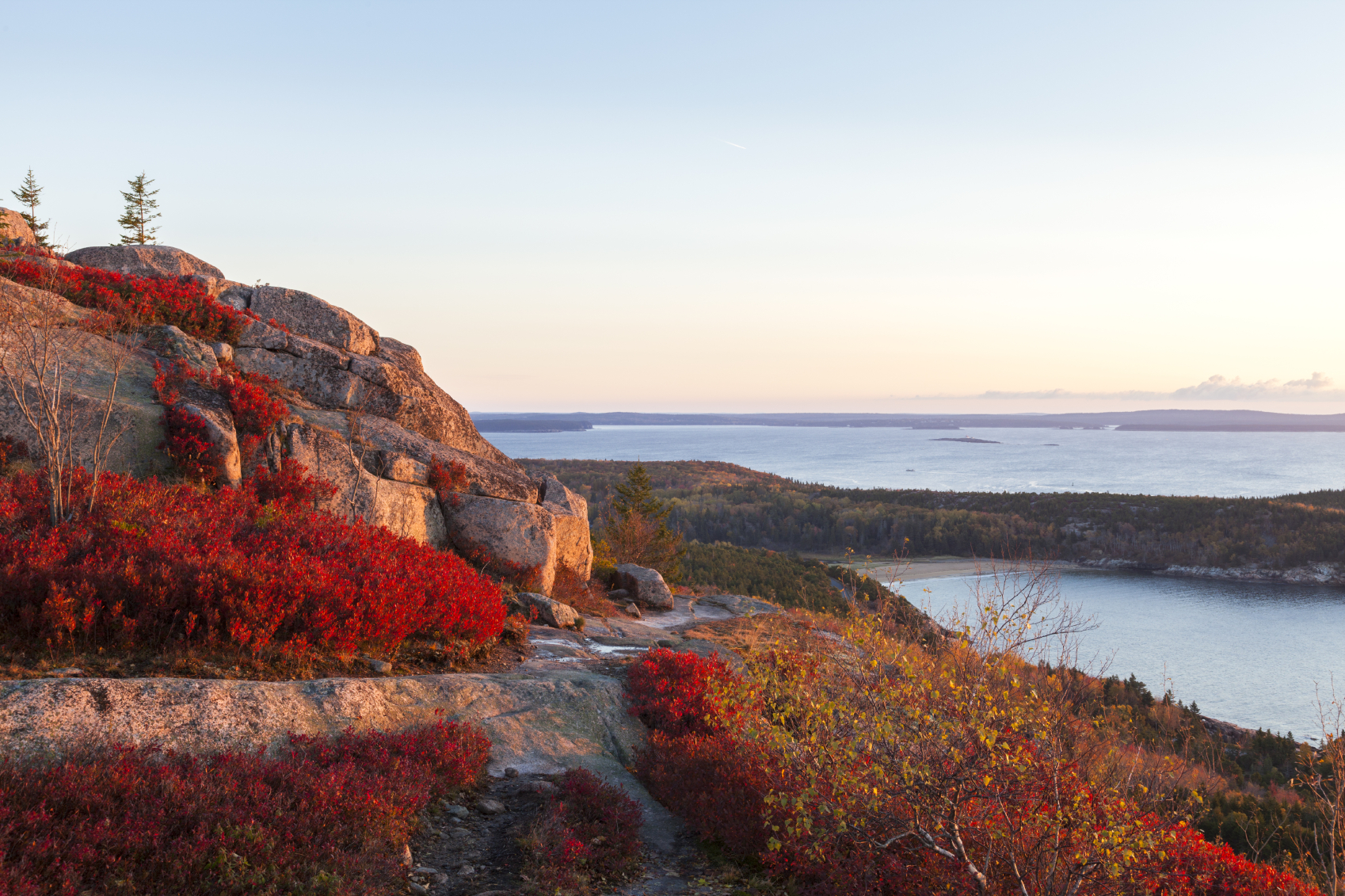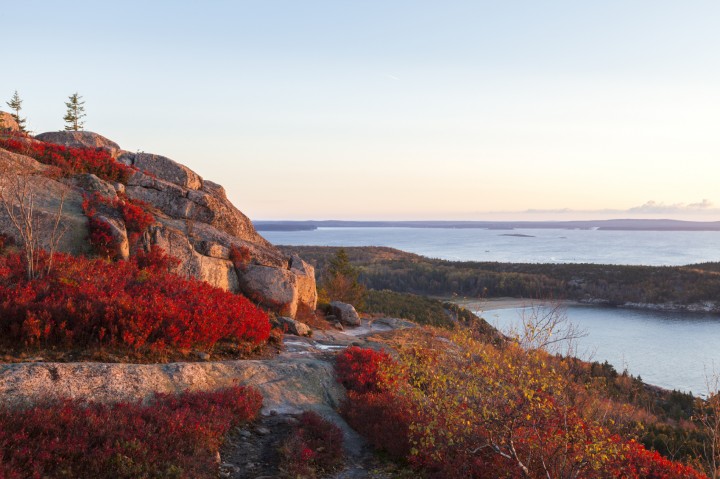Acadia National Park
Acadia National Park’s landscape is so mesmerizing it will take your breath away. When people think of Acadia, they think of it mostly as a refuge for nature; it’s been viewed as such since the first artists from Eastern Seaboard cities ventured here in the 1840s. But Acadia is no more a work of pure […]

The first light of sunrise in autumn from atop Gorham Mountain, with Sand Beach in the background; Acadia National Park, Maine.
Photo Credit : Ken Brown / IstockphotoAcadia National Park’s landscape is so mesmerizing it will take your breath away.

Photo Credit : Ken Brown / Istockphoto
When people think of Acadia, they think of it mostly as a refuge for nature; it’s been viewed as such since the first artists from Eastern Seaboard cities ventured here in the 1840s. But Acadia is no more a work of pure nature than Michelangelo’s David is a block of pure marble. The landscape and our access to it have been subtly crafted by generations of artists who designed and built an extensive network of trails: some 125 miles of footpaths and 45 miles of carriage roads suited to walking.
Acadia’s carriage roads are rightly famed for their beauty and grace. They were designed for an earlier era, yet suit ours perfectly. Broad and well-wrought of finely crushed stone, often edged with boulders, these gently winding roads have a medieval, fairytale-like quality, and you half-expect a troop of knights to come galloping along, pennants fluttering. The roads were one of the grand extravagances of the early 20th century, built so that island denizens could take their horses and buggies out into the wilds without suffering the indignity of unattractive sights or untidy lanes. Paid for largely by John D. Rockefeller Jr., they weave through forests, along streams, and up hills, with ocean or lake views that blossom with every yard of elevation.
Today the roads feel as though they were designed solely in anticipation of the invention of mountain bikes. They’re perfect for a slow afternoon’s pedal—but I find that they’re also perfect for walking. I started the day climbing, occupied with the rhythm of my heart, then moved into hiking, which involved complicated negotiations among feet, legs, and rocks. Now I’m moving loosely with a comfortable rhythm, and for the last four miles, I feel as though I’m on autopilot.
Climbing and hiking are adventures of the body; walking is more an adventure of the mind, a time when your thoughts can unspool in a leisurely way. Only once is my breath taken away: when I stop to admire the view of Jordan Pond from the carriage road along the base of Penobscot Mountain and I happen to glance down. The road was built atop a 20-foot rock wall painstakingly crafted out of a talus slope; the labor to provide me with this simple view seems nearly Egyptian.


